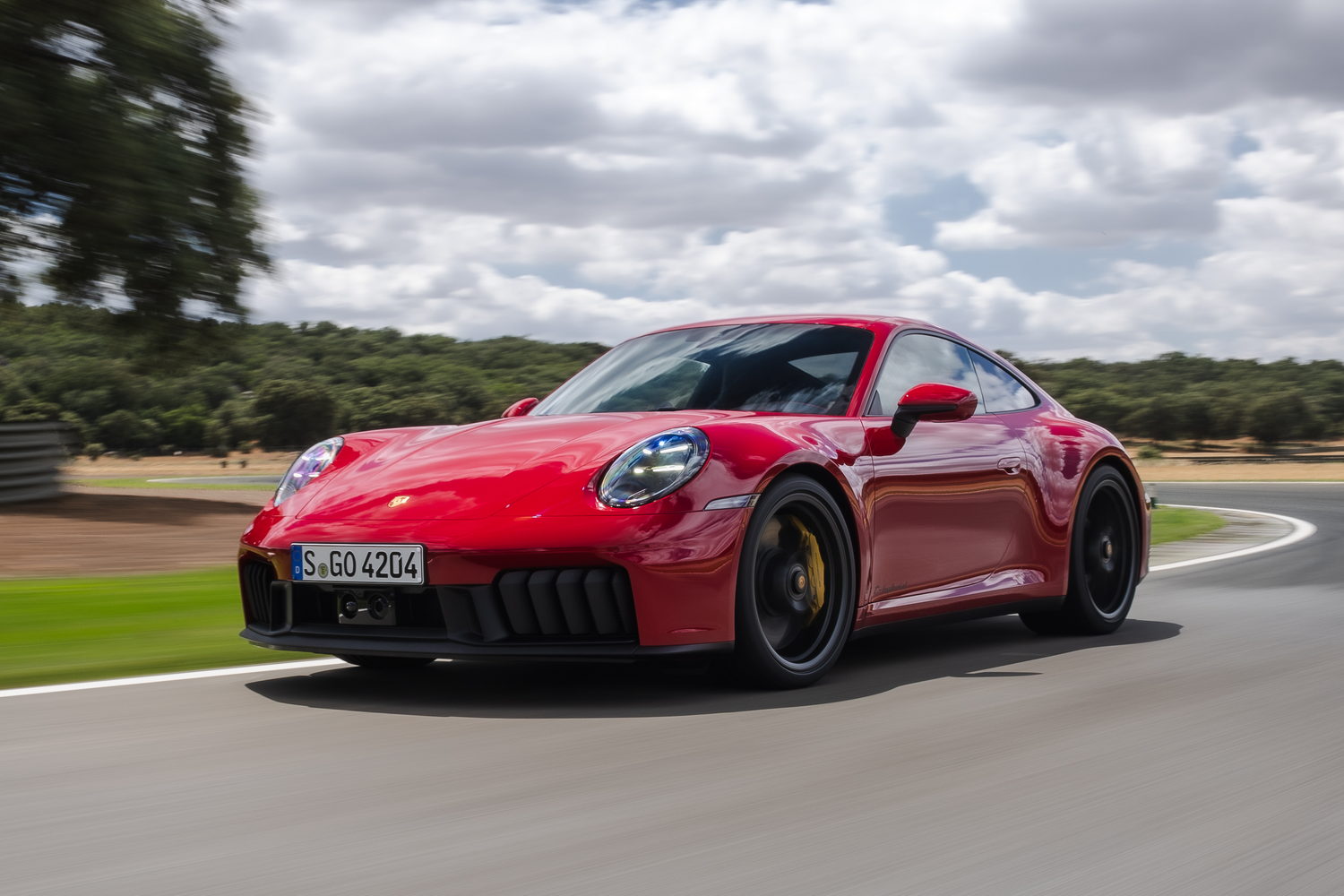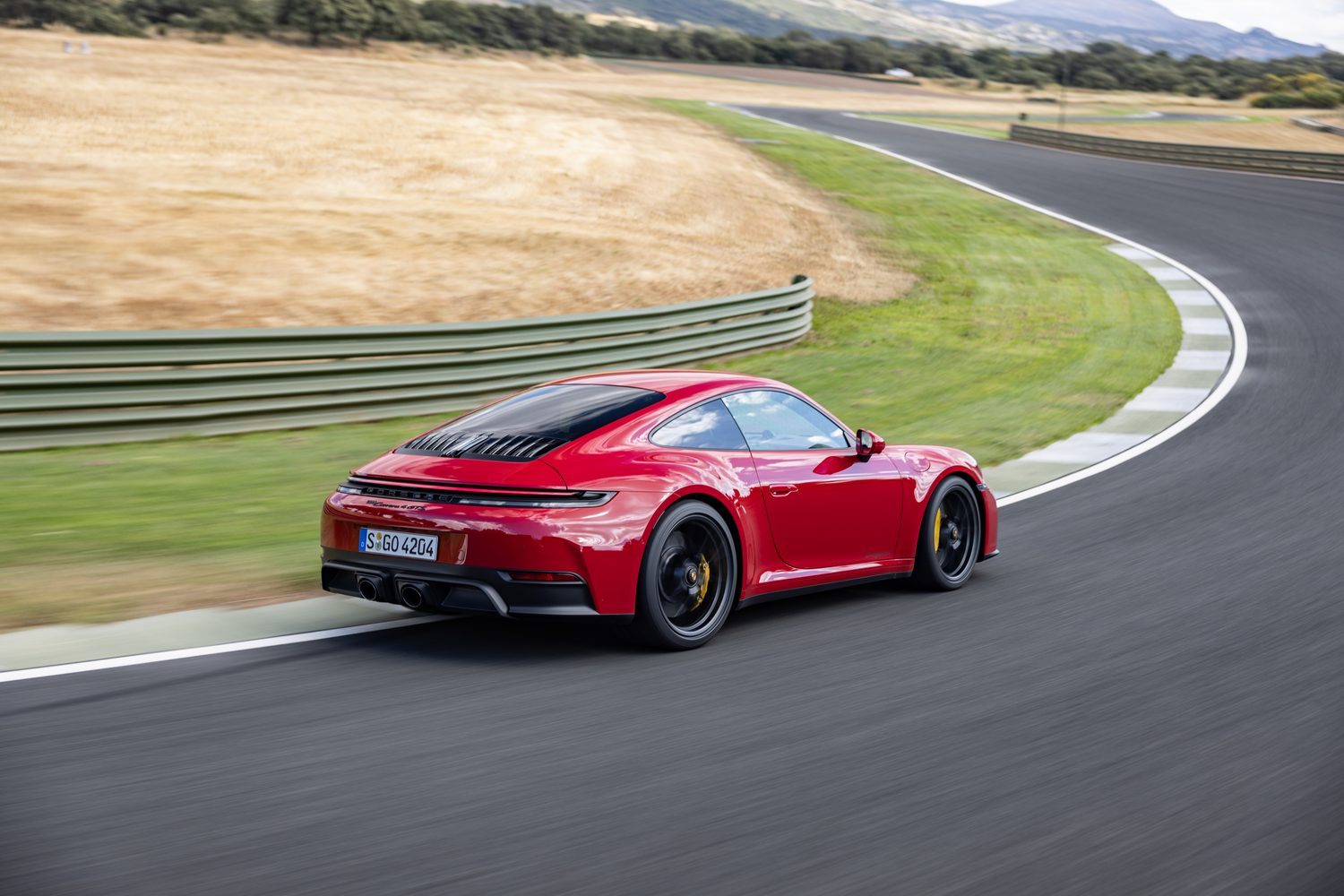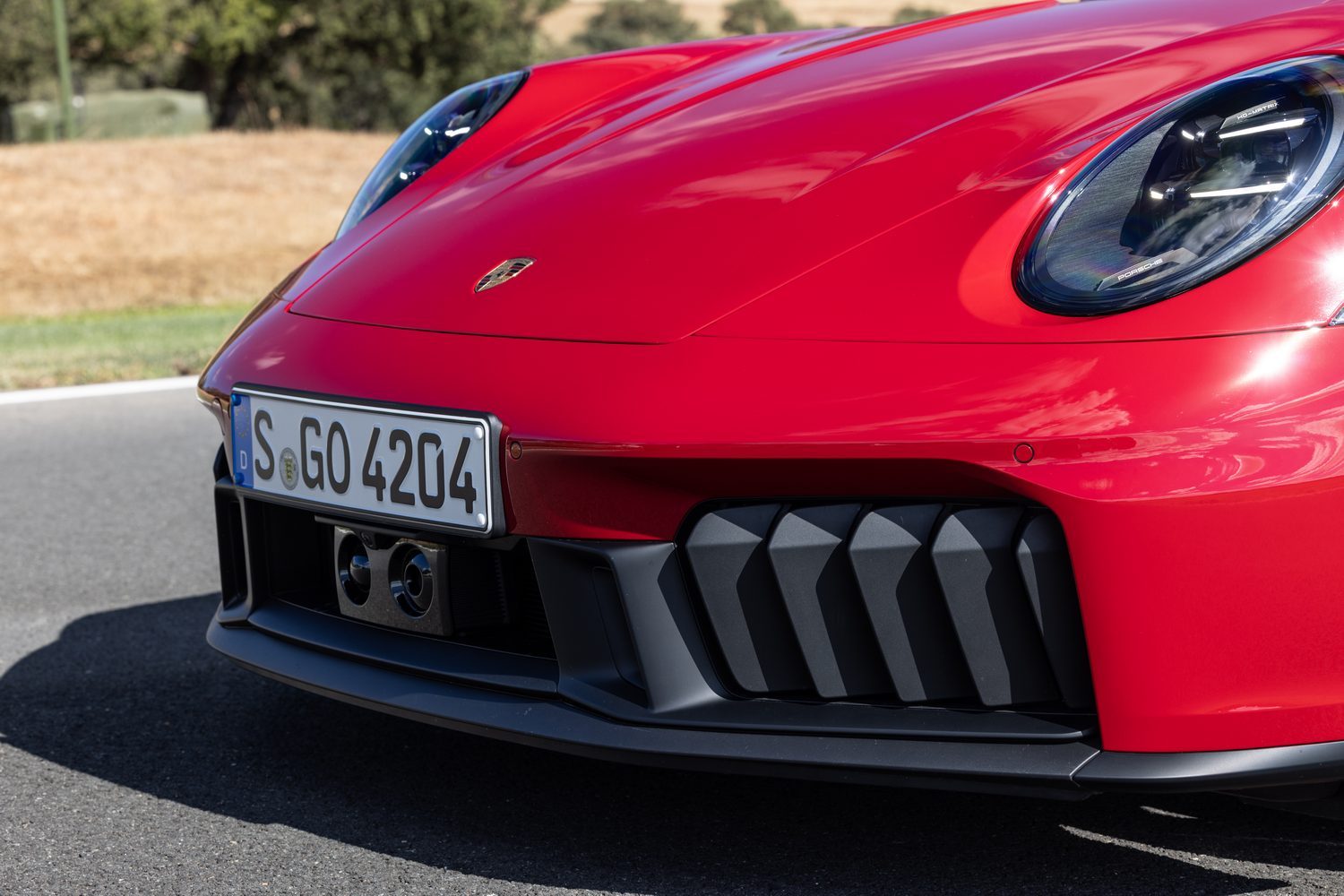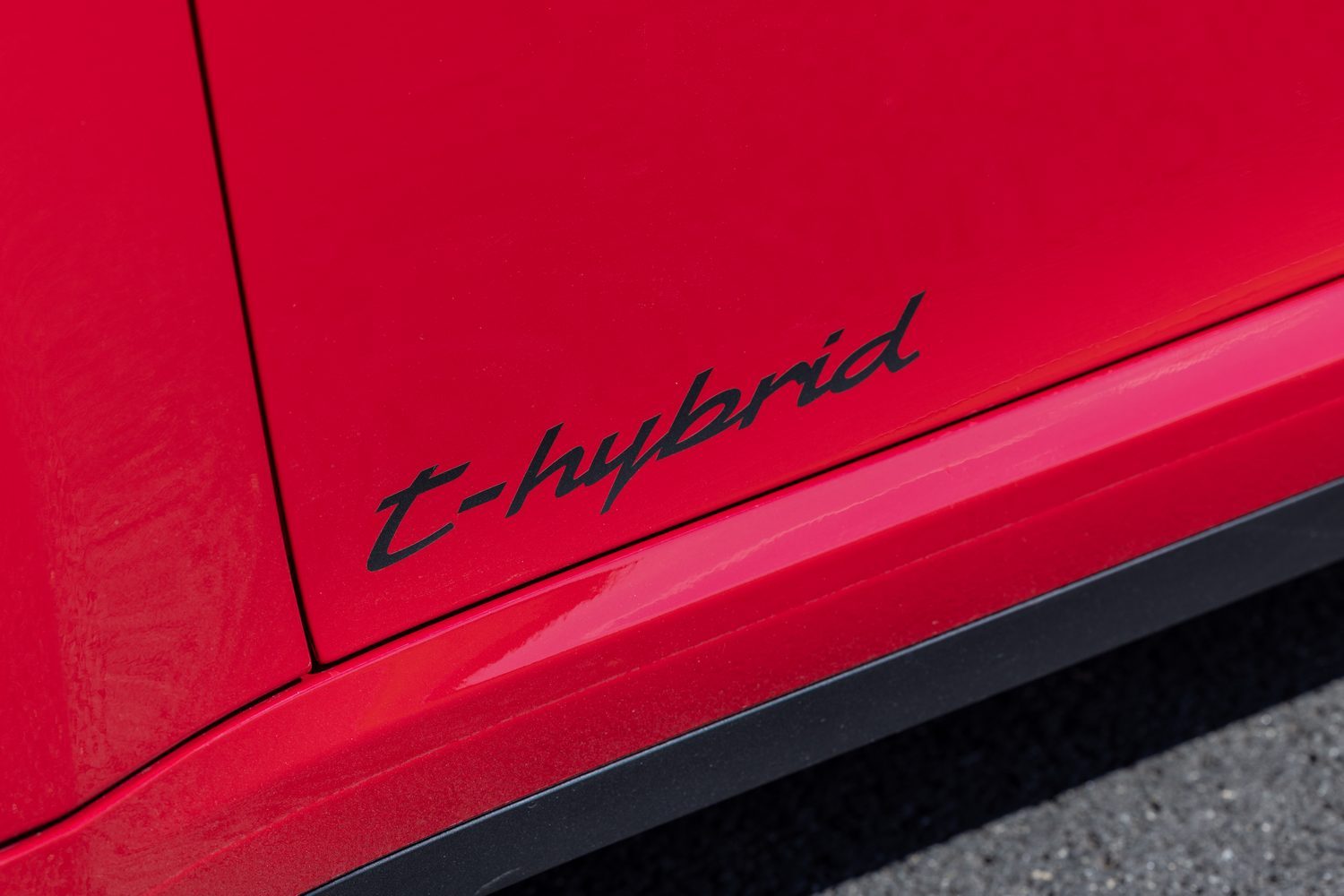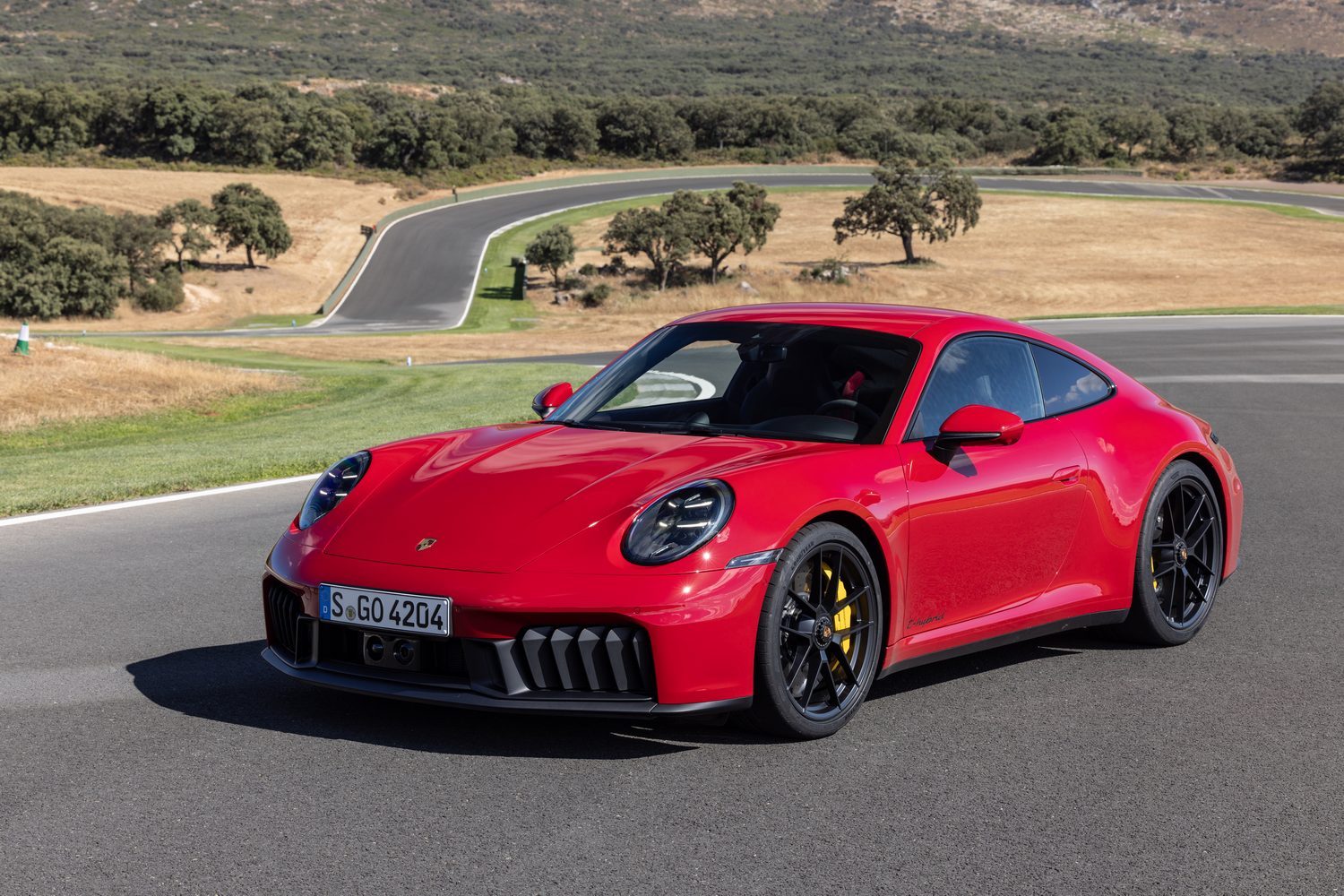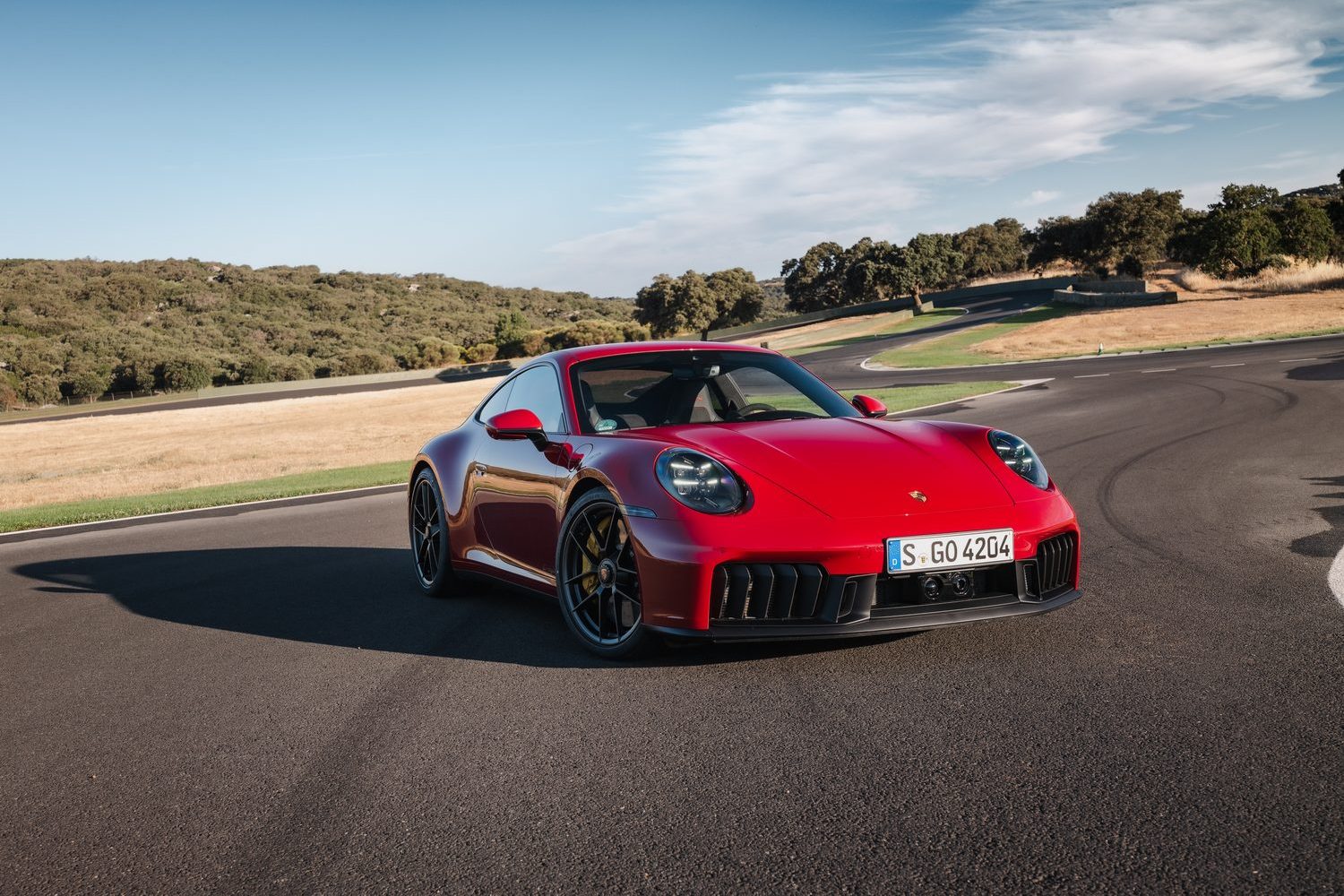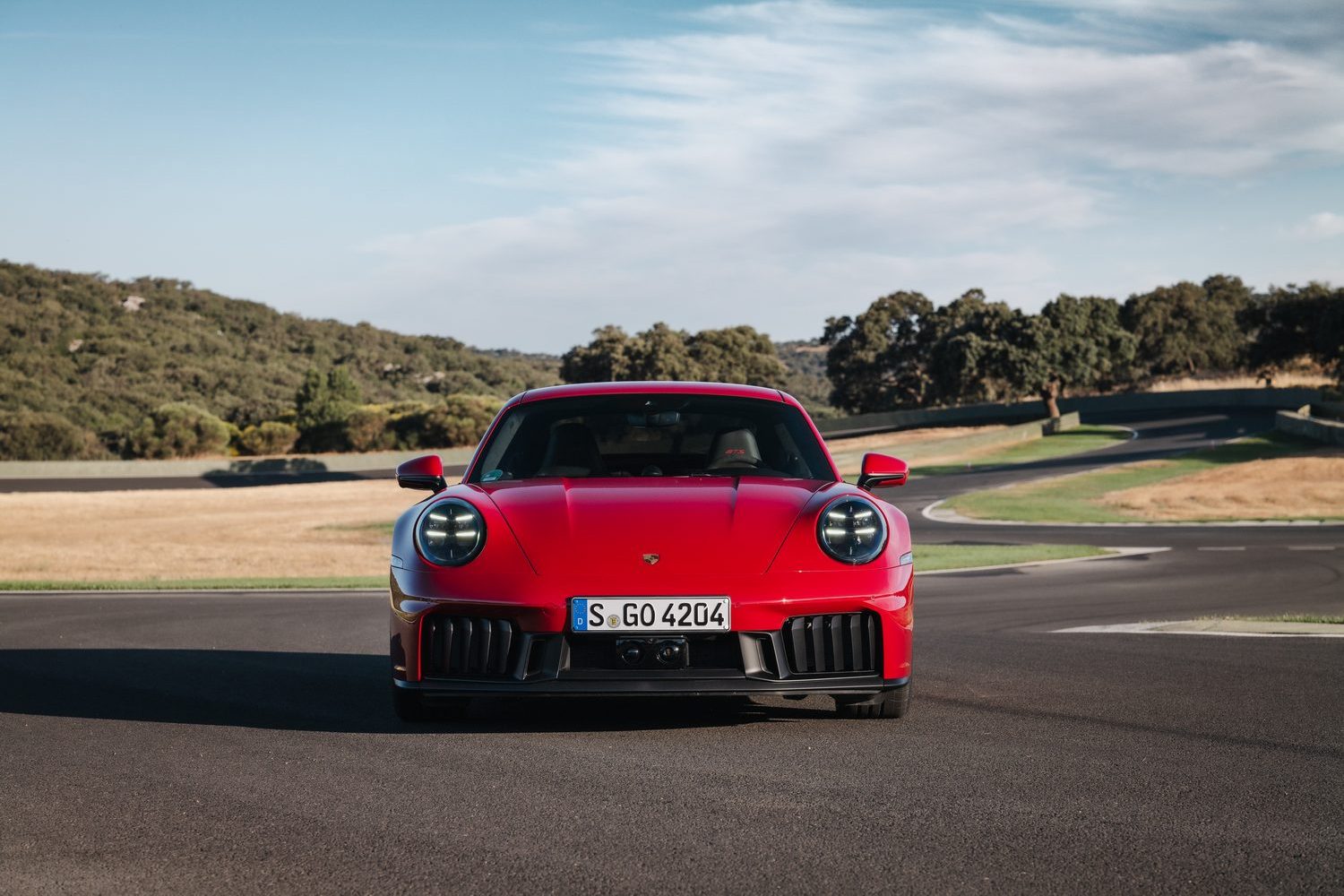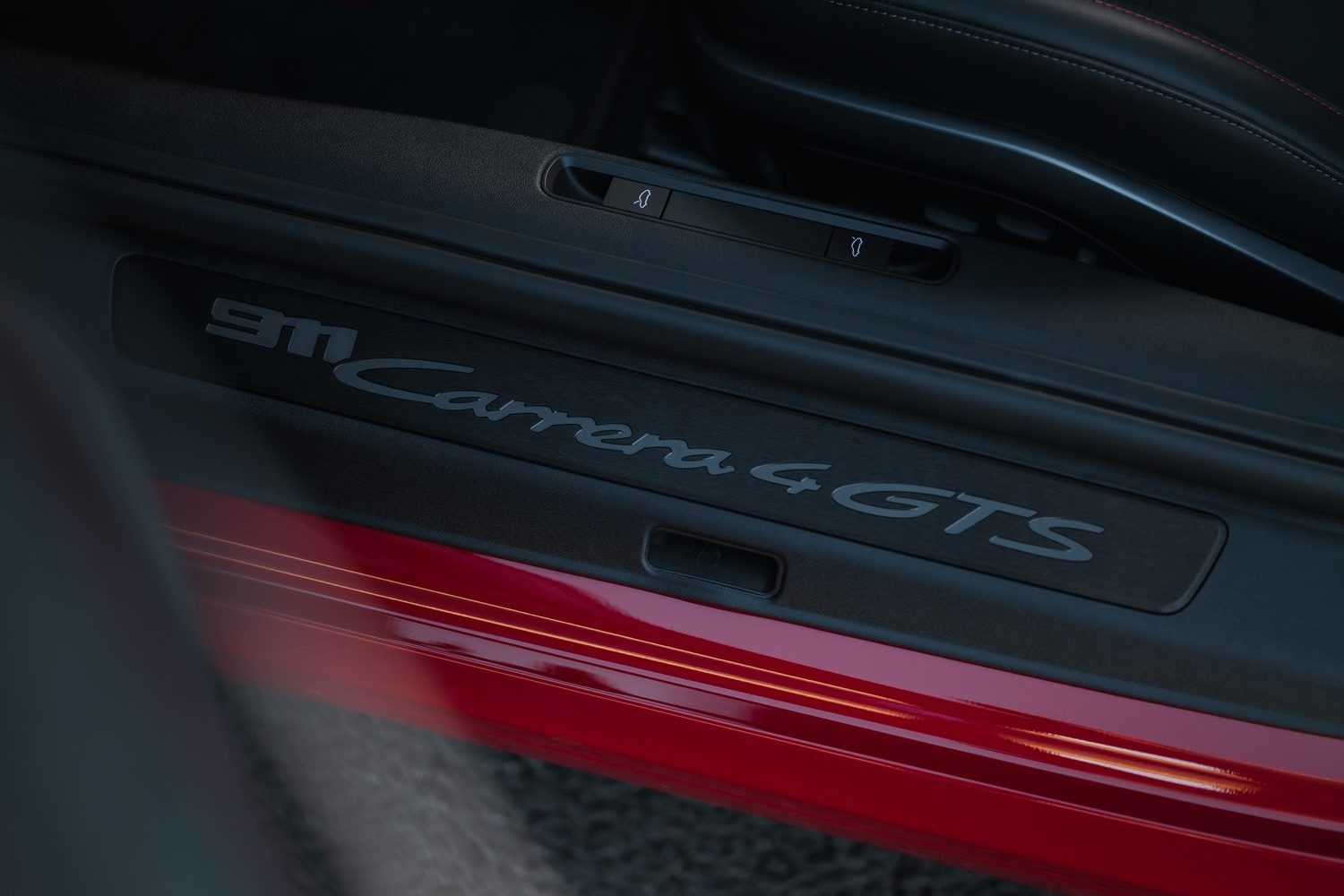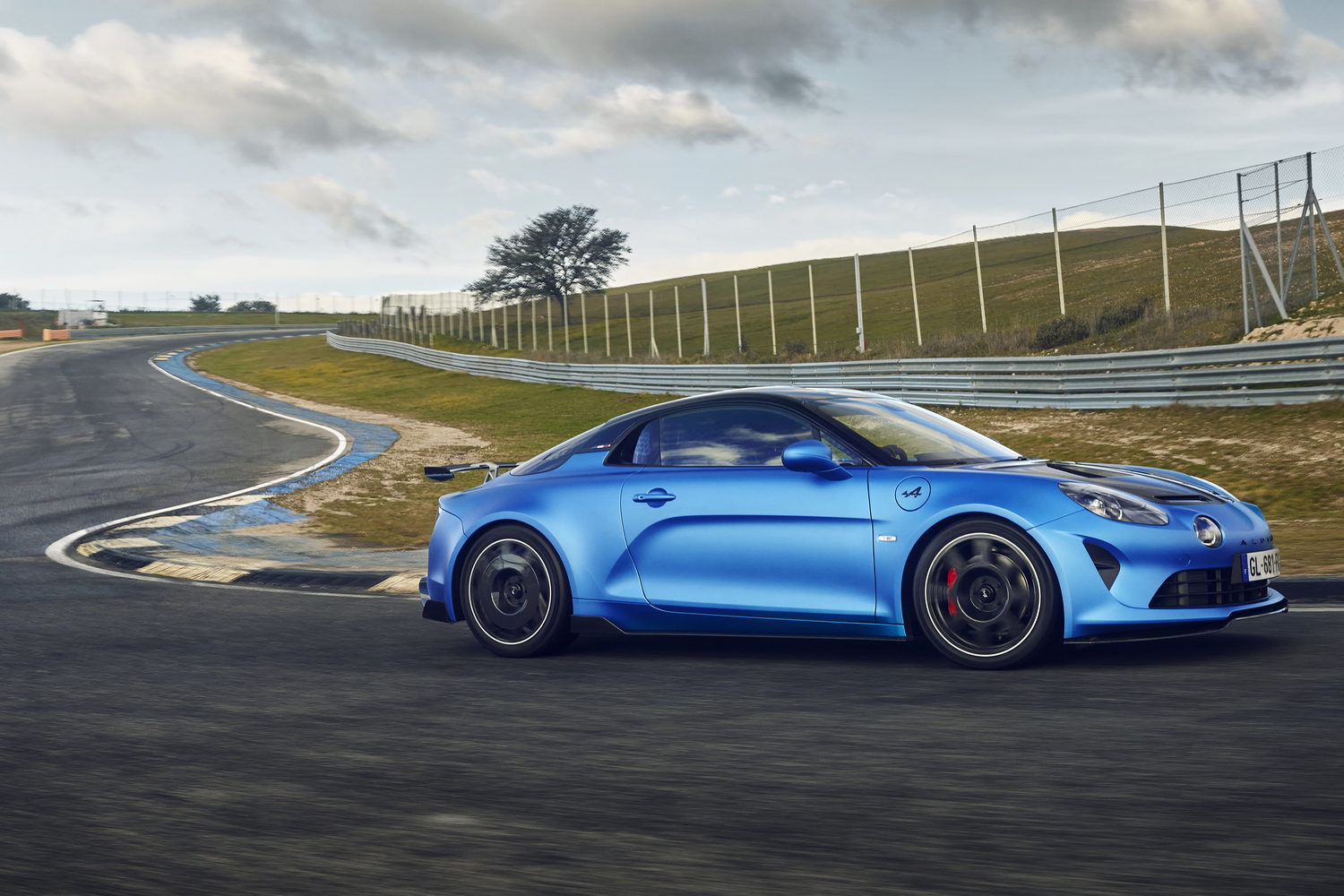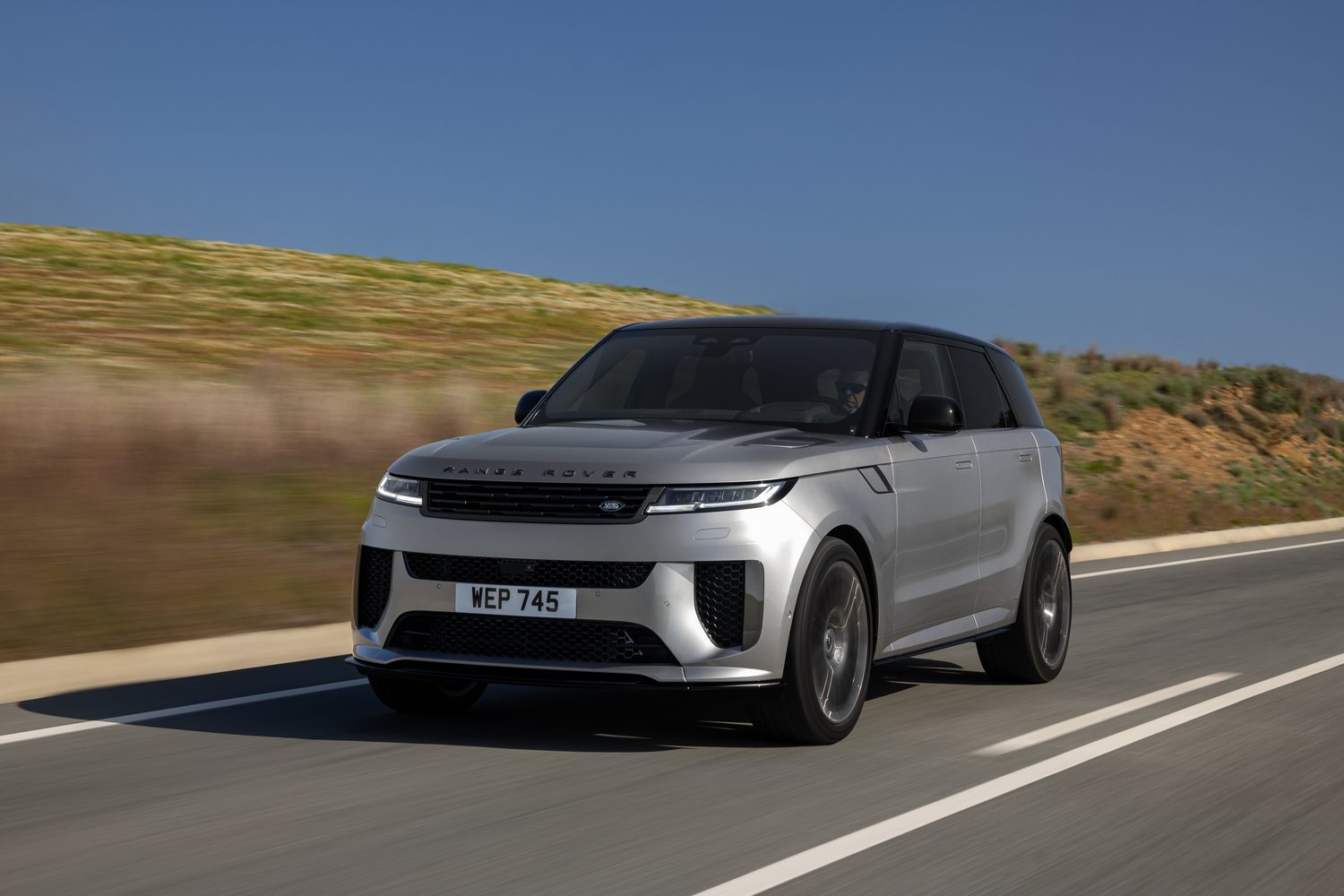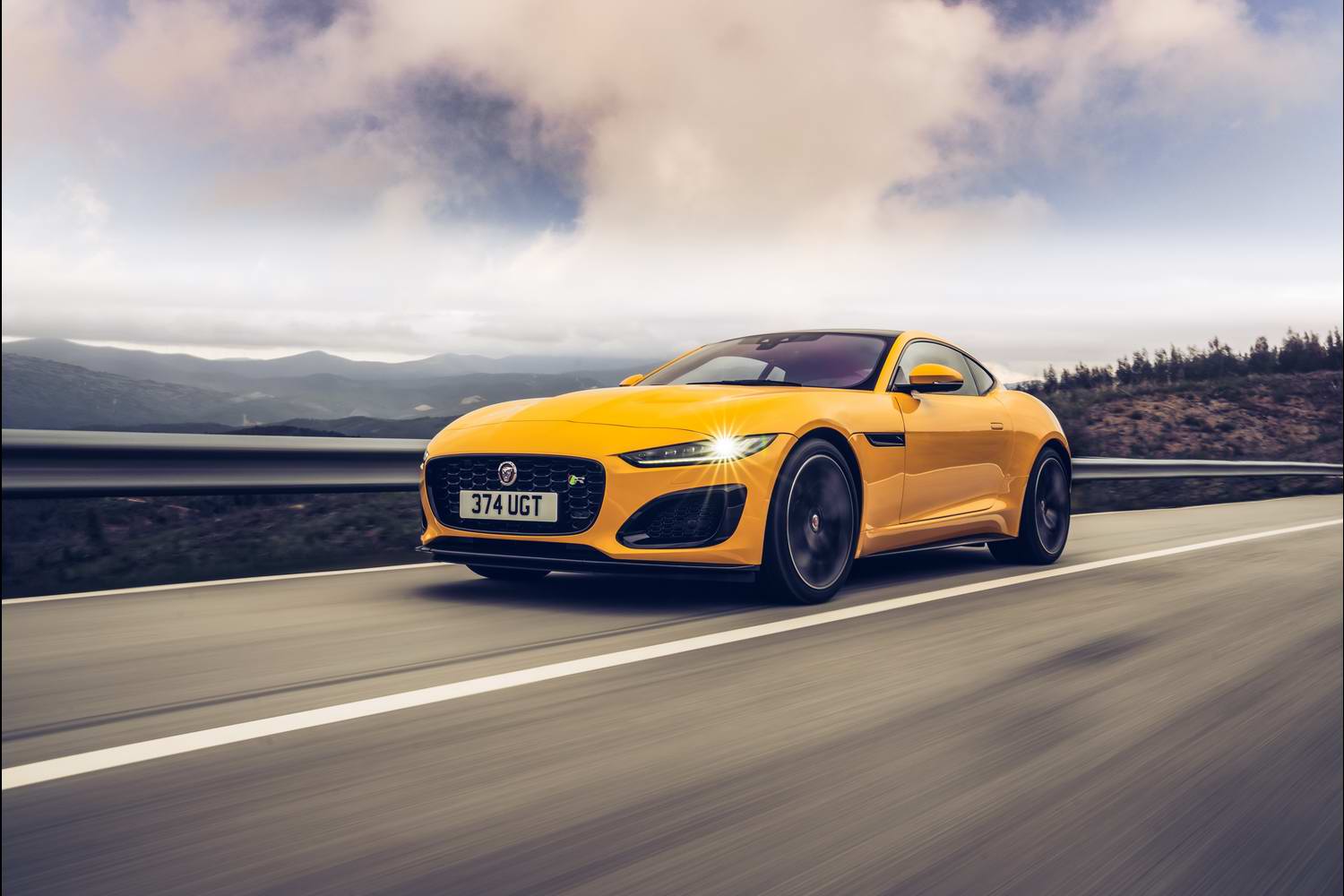Considering the Porsche 911 story is one of constant evolution, aficionados of the brand are surprisingly resistant to change. Porsche itself shared some of the social media furore created when it announced the new 911 - internally known as the 992.2 - would be a hybrid, and it was savage. But despite the disquiet, Porsche pressed ahead, and as if to spite the naysayers, it did so with the darling of 911 enthusiasts everywhere: the GTS.
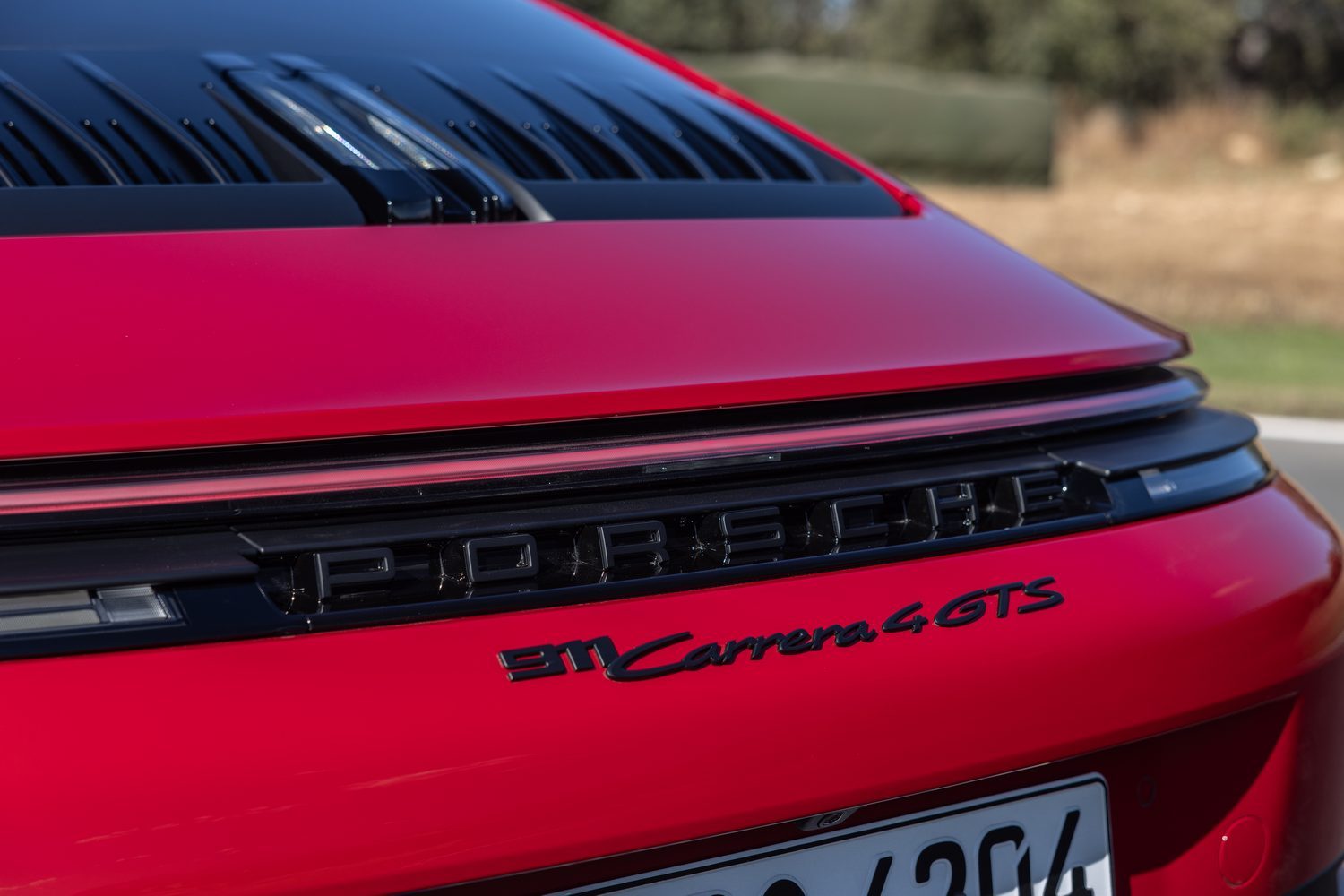
Yes, the model commonly regarded as a sweet spot in the 911 range, the halfway house between the ‘conventional’ Carreras and the high-performance GT3 models, has moved to hybrid power. Porsche says it’s a performance-related decision, though, and the new GTS is undoubtedly more powerful than its predecessor, the 992.1. But will it prove more appealing?
This, our first drive of the 992.2-generation 911, saw us take the GTS on the road and the racetrack to find out what’s what.
How fast is the Porsche 911 Carrera 4 GTS?
Porsche is adamant that the hybrid system in the GTS is all about performance rather than economy, and the figures back that up to an extent. Certainly, this isn’t some low-emission plug-in hybrid, which might disappoint some would-be corporate customers, but it is still more efficient than its predecessor. More importantly, though, it’s also more powerful.
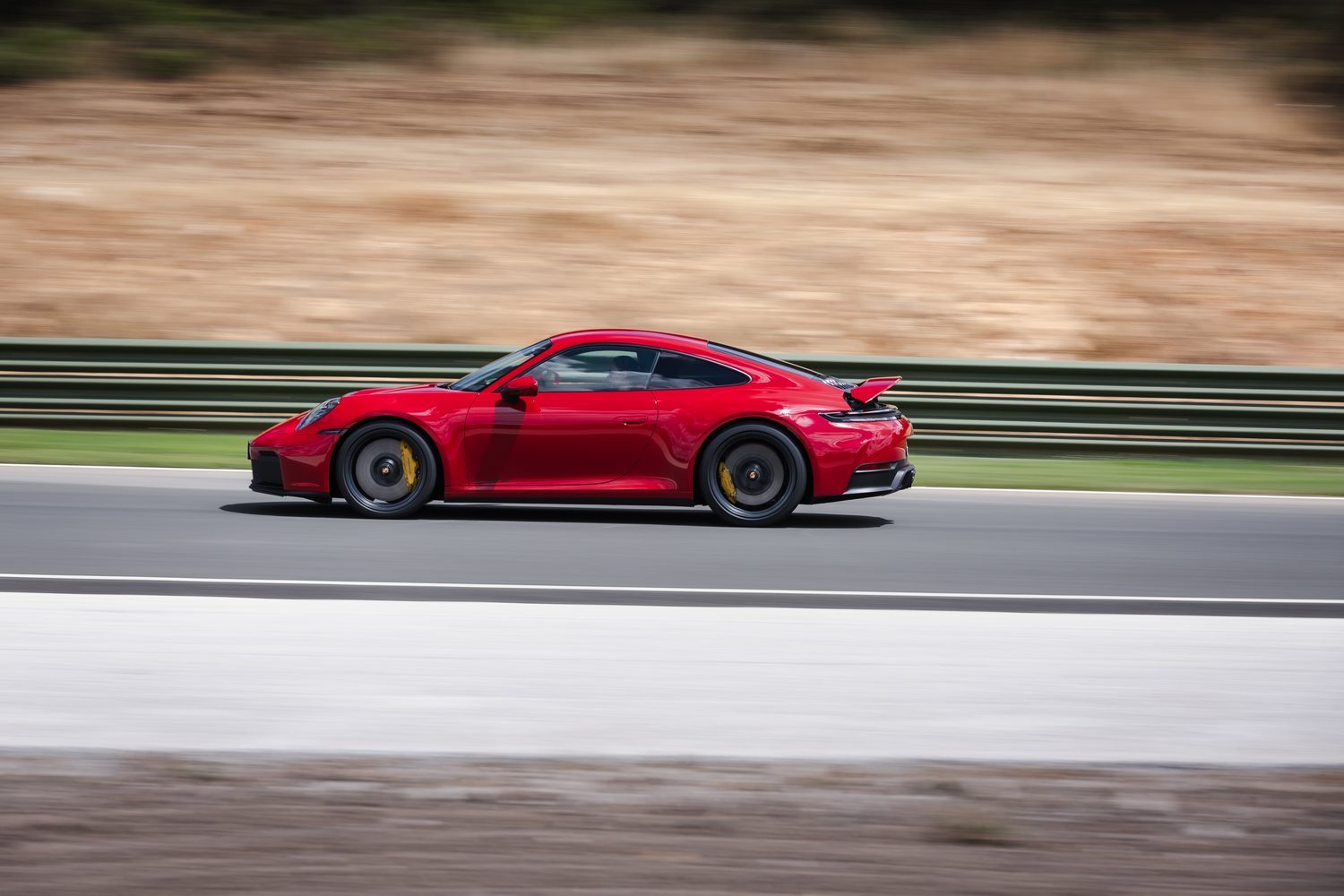
At the heart of the car, and still mounted at the back, is the all-new, slightly more compact 3.6-litre flat-six engine, which is fitted with the new ‘eTurbo’ electric turbocharger that works with the hybrid system, and there’s a relatively low-powered 41kW electric motor housed in the gearbox.
The result is a 61hp increase compared with the old GTS, taking the maximum power output to 541hp, and that means the hybrid car gets from 0-100km/h four tenths of a second faster than its predecessor, managing the sprint in three seconds flat. Flat out, it’ll travel at 312km/h.
But the hybrid system does more than just increase power. It’s also used to improve responsiveness, with electrical power helping the petrol engine out in more ways than one. The electric motor in the transmission combines its might with that of the flat-six under acceleration, but there’s another little motor in the turbocharger, spooling it up in advance so it can produce maximum boost almost immediately.
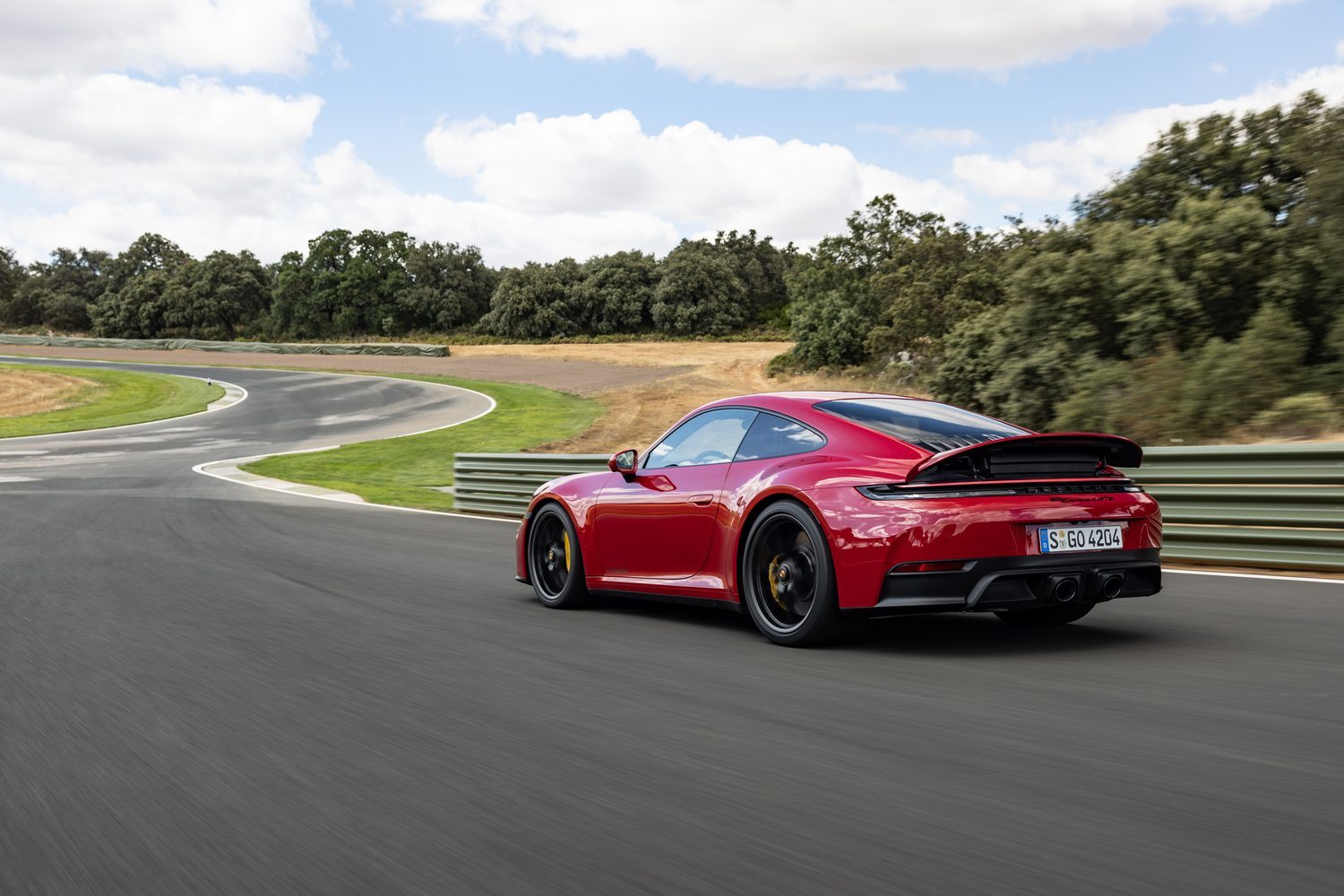
That means the GTS’s acceleration is not only rapid, but relentless, catapulting the car towards the horizon at enormous speed. The only slight - and we mean slight - pause is the punctuation provided by the rapid gear shifts from Porsche’s now-familiar eight-speed double-clutch automatic gearbox. This can be quite savage in Sport Plus mode, but beautifully smooth in the Normal setting.
And while some customers might have been worried about the impact of hybridisation on the noise made by the GTS, they needn’t fret. The flat-six is as sonorous as ever, and the sports exhaust setting makes it even fruitier. The turbocharger adds its own chorus, too, snorting and snuffling away in the background like an angry beast. It’s remarkably characterful.
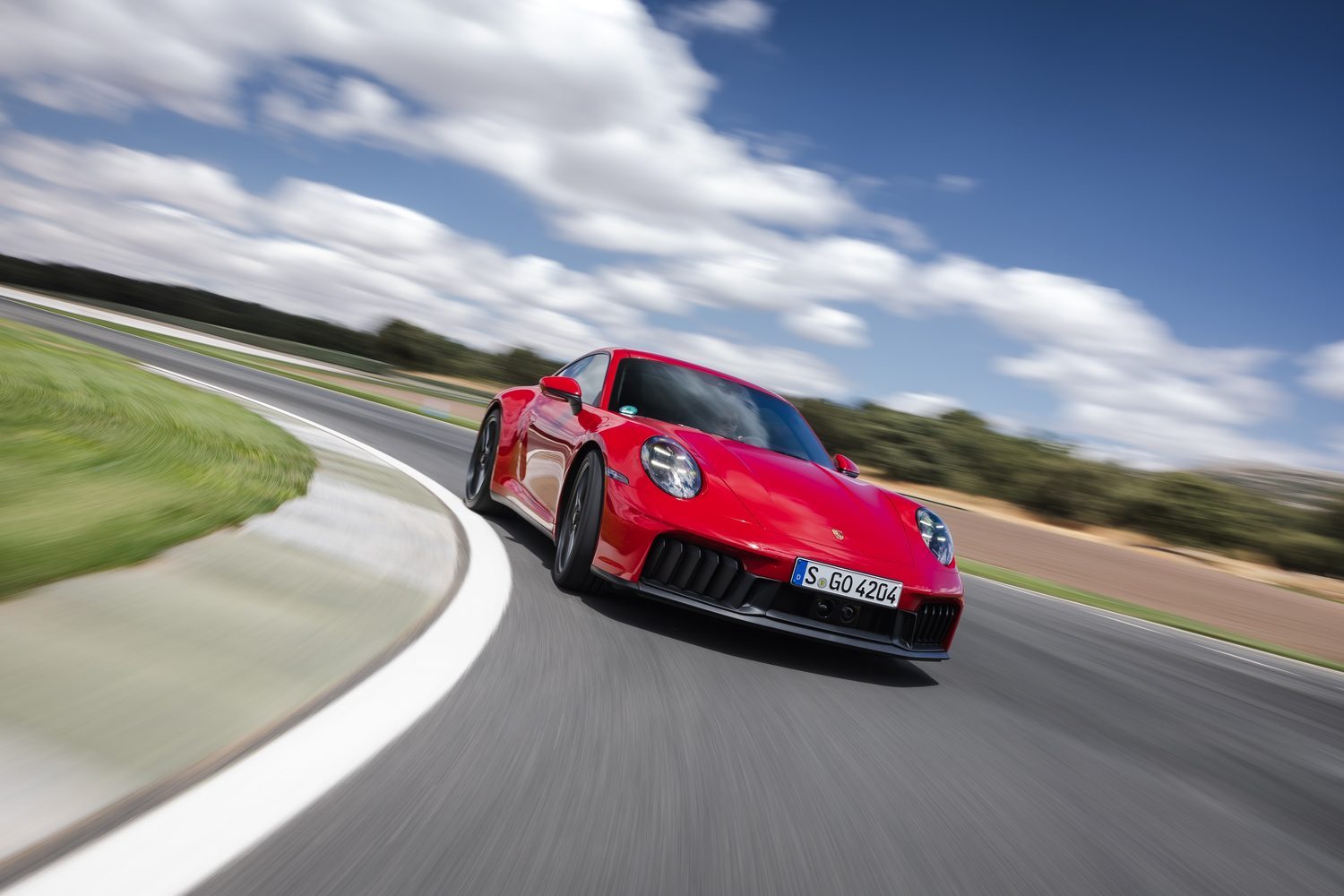
Driving the Porsche 911 Carrera 4 GTS
There was a time when the GTS was regarded as the sweetest of the 911s - the car that merged the talents of the GT3 models with a price tag more akin to the conventional Carreras - but the previous example missed the mark slightly. It was a stonking track car, but a little too firm for road use in Ireland, which meant it only really fulfilled half its brief.
Yes, this is supposed to be the 911 for those who do the occasional track day, but mostly use their car on the road. So, Porsche has lowered it by 10mm compared with the standard Carrera, and fitted active suspension tech. Actually, the 10mm drop in ride height only applies to the Coupe and Cabriolet versions of the GTS, as the Targa gets the higher suspension setting.
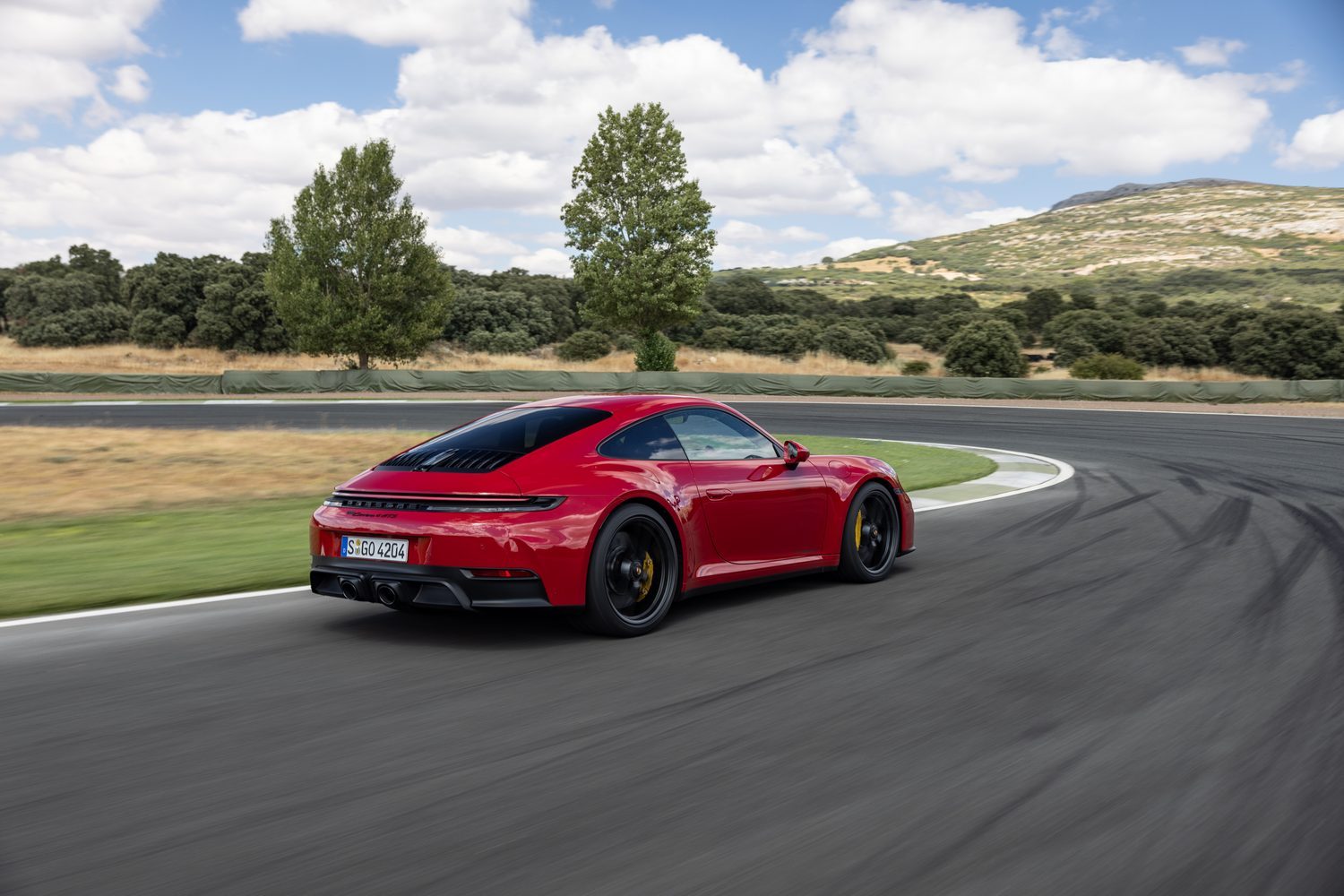
All cars get refined suspension, too, and rear-axle steering is fitted as standard for the first time. At low speeds (below 50km/h), the rear wheels steer in the opposite direction to those at the front, cutting the turning circle, while at speeds over 80km/h, they steer in the same direction to improve stability.
The results speak for themselves as the GTS is incredible in corners. It turns in sharply, with glorious feel through the Race-Tex-wrapped steering wheel, and the car rotates around your hips. At times, you can feel the four-wheel steering doing its work, tucking the car in nicely and taking full advantage of the grip from the enormous tyres.
And the grip is plentiful, with the car seemingly clinging to the asphalt for dear life. Even in rear-wheel-drive form, traction is epic, but the all-wheel-drive version allows you to get on the power sooner and in any weather, with far less fear of losing the back end. The rear can still feel a little threatening at times, but it takes serious persuasion before it’ll break away. When it does so, it’s wonderfully intuitive to control.
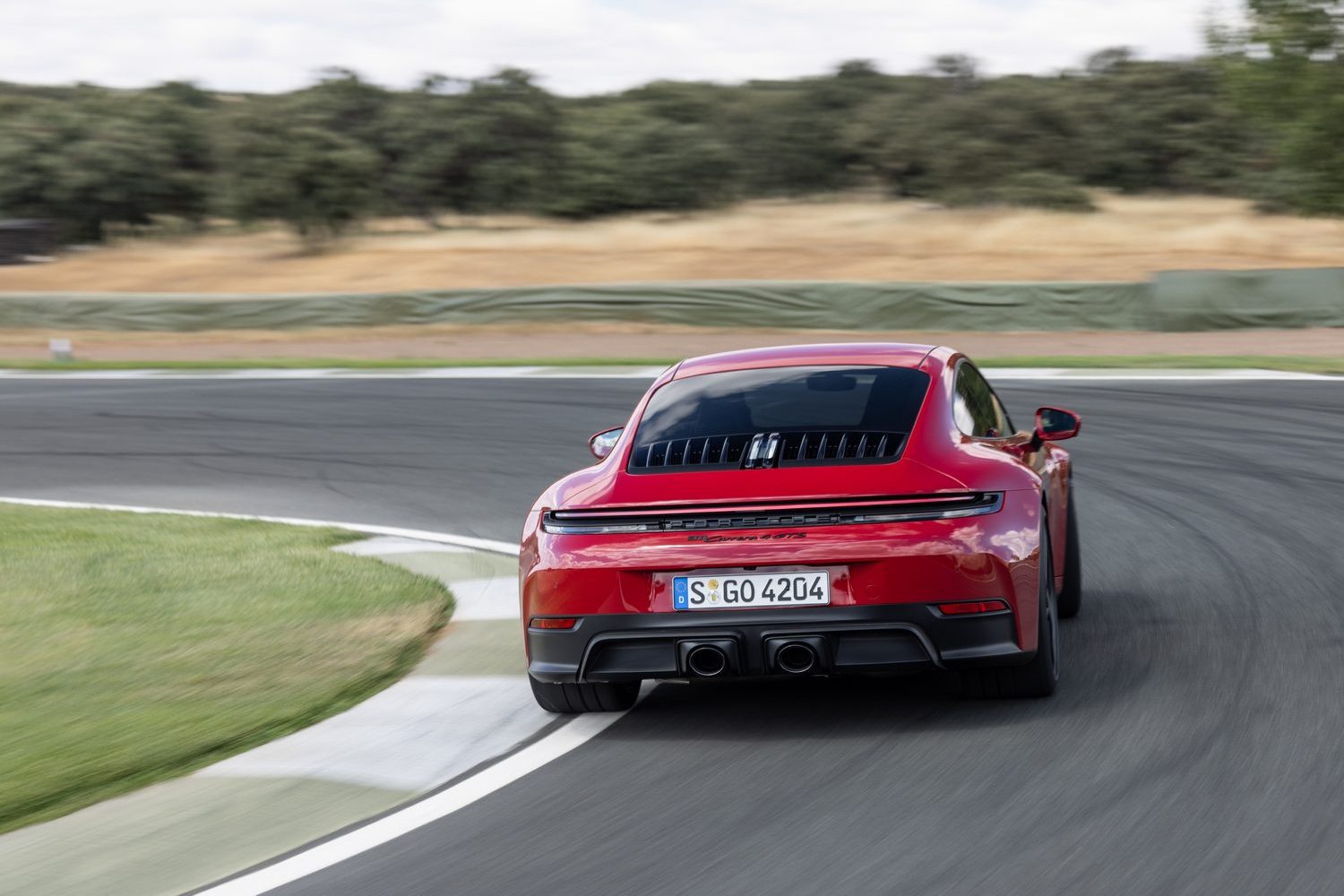
Special mention should also go to the brakes, which are monstrously powerful. The optional carbon-ceramic brakes have power to spare, slowing the car incredibly effectively, but even the standard steel brakes are great, with proper feel and ample arresting power.
But almost as impressive is the way the car controls its body. Even in the softest setting - Normal - the car keeps itself relatively flat, and more than enough to qualify as an exceptionally well sorted sports car. Ramp it up to the sportiest setting, though, and it suddenly ups its game, buttoning the car down to keep it almost completely level even when cornering hard.
From November, the GTS will be offered with the optional Porsche Dynamic Chassis Control roll stabilisation system, which will always keep the car almost completely level, but it doesn’t really feel necessary: the GTS is spectacular enough as it is.
However, it still feels a bit firm for use on the road. A standard Carrera is a magically supple thing, but the GTS has a bobbly edge to it that irritates slightly. Admittedly, our test on Spanish roads revealed few significant issues, but the underlying stiffness was still evident and the jarring ride over the occasional pothole leads us to suspect more flaws would be unmasked by the scarred surfaces we endure in Ireland.
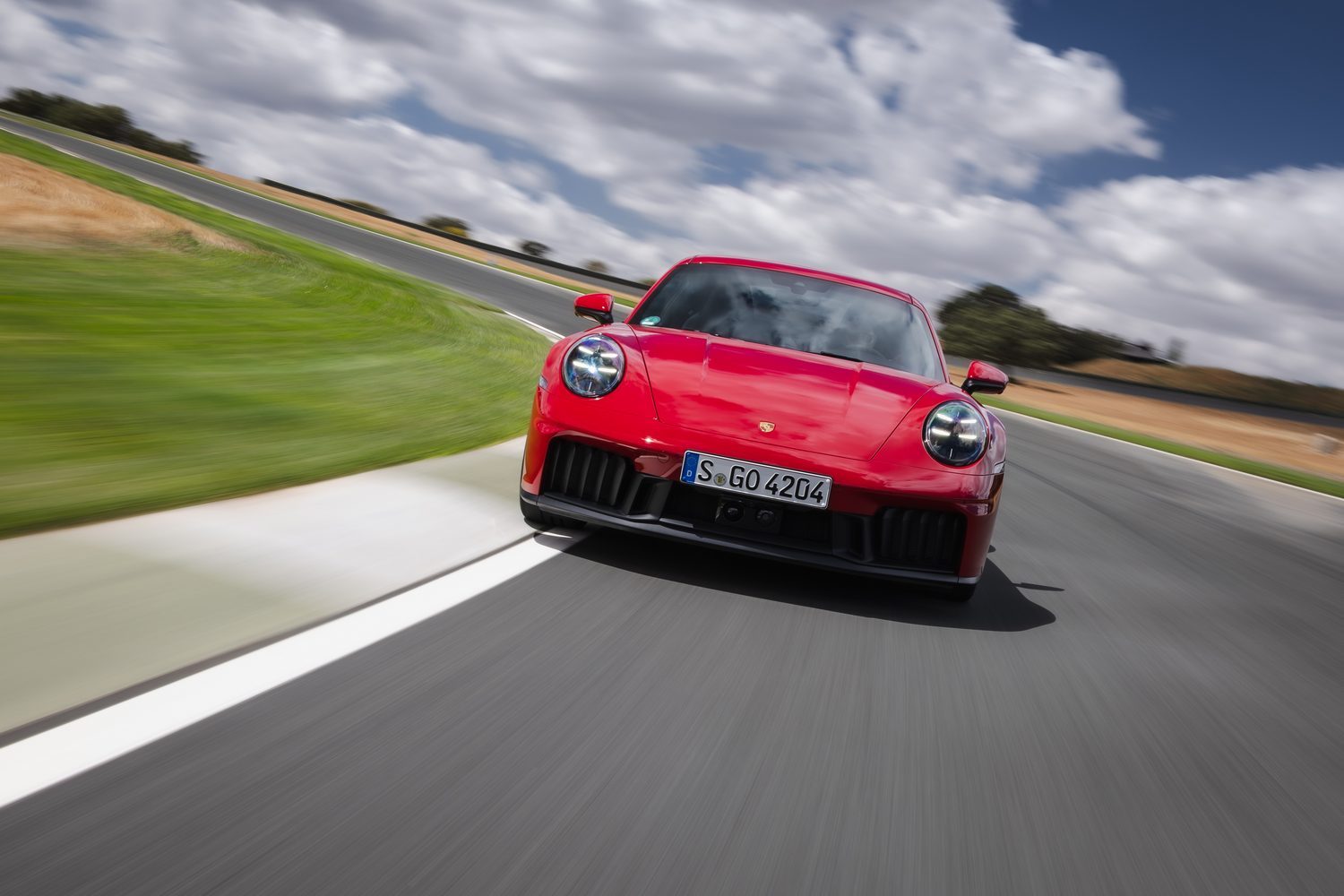
That said, it didn’t feel quite as stiff as its predecessor, but we’ll wait to get the car on more representative roads before we pass final judgement.
How much will the new Porsche 911 cost in Ireland?
Porsche is charging a hefty €195,840 for the standard 911 Carrera, but that rises sharply to €257,619 if you want the GTS model. And going for the four-wheel-drive version hikes the Irish price to €271,091. It’s an awful lot of money, though standard equipment is plentiful.
As well as all the mechanical GTS upgrades, the cars come with dark grey alloy wheels, the GTS bumpers and black lettering. You get clever Matrix LED headlights as standard, too, and all the GTS accoutrements inside. The digital instrument cluster is standard, as is the touchscreen, and two-zone climate control. Four-way electrically adjusted sports seats also come as standard, complete with the Race-Tex inserts, while keyless entry and Porsche’s driving mode selector is thrown in.
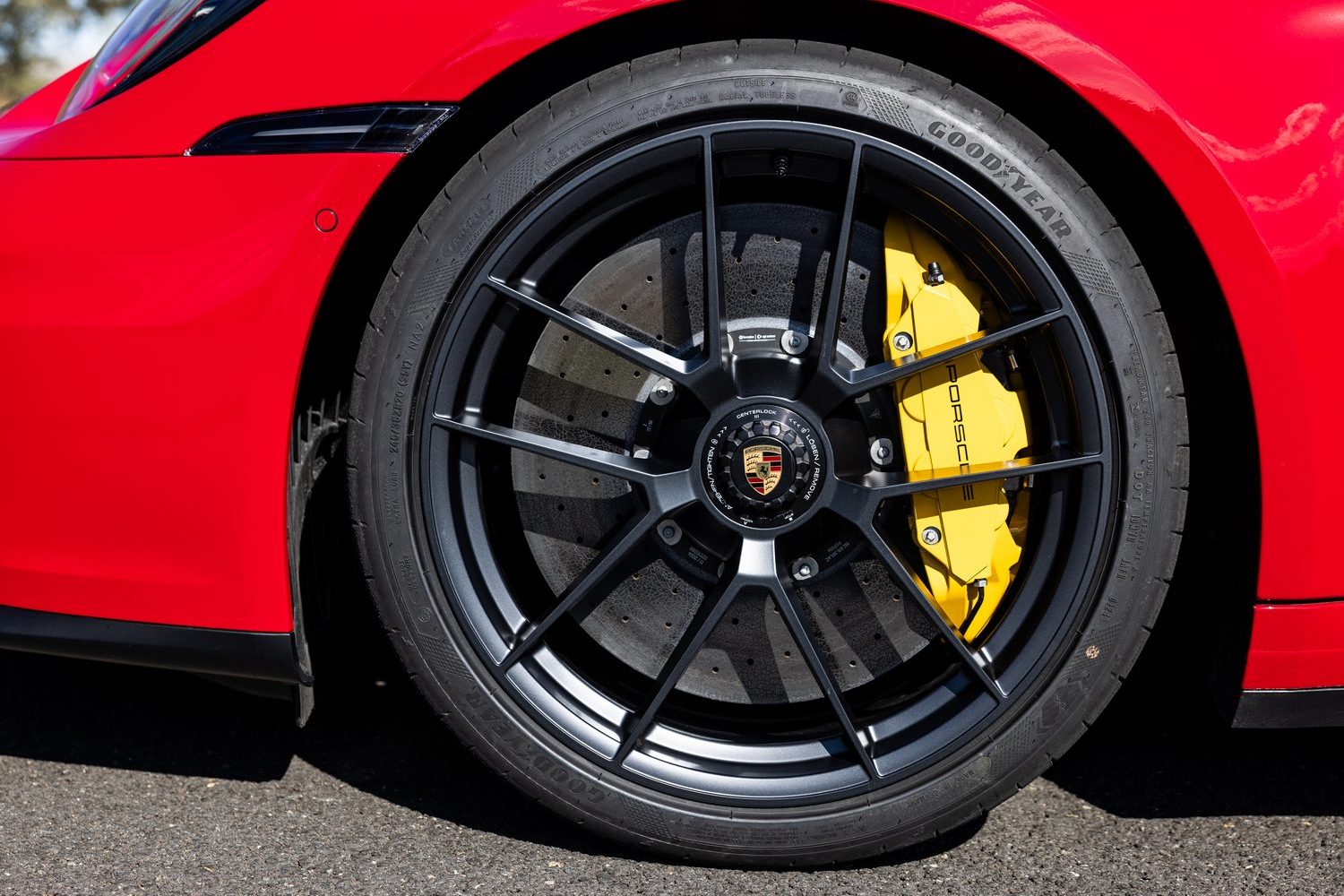
But this being a Porsche, the options list is lengthy, and it ranges from fundamentals such as the carbon-ceramic brakes to minor stuff like different badges on the rear bumper.
A look inside the new Porsche 911
All new 911s, whether hybrid-powered or otherwise, have had something of an update inside. Essentially, this is a mid-life refresh for the 992-generation car - hence 992.1 becoming 992.2 - so the changes inside are restrained. The strong dashboard design remains, but it’s now fitted with a new digital instrument cluster that’s easier to see and more configurable than the old part-analogue, part-digital arrangement.
There are minor changes to the touchscreen, too, which has become a bit cleverer than before, and the drive mode selector, which now feels more premium but looks cheaper. Otherwise, though, it’s more or less unchanged inside. That means the divisive toggle gear selector dominates the centre console and plenty of physical buttons remain on show, which is a positive in our book. But some things, such as the location of the cruise control switchgear (behind the steering wheel) probably should have been redesigned. Instead, Porsche simply swapped the old turnkey ignition switch, which we were quite fond of, for a sensible but uninspiring button.
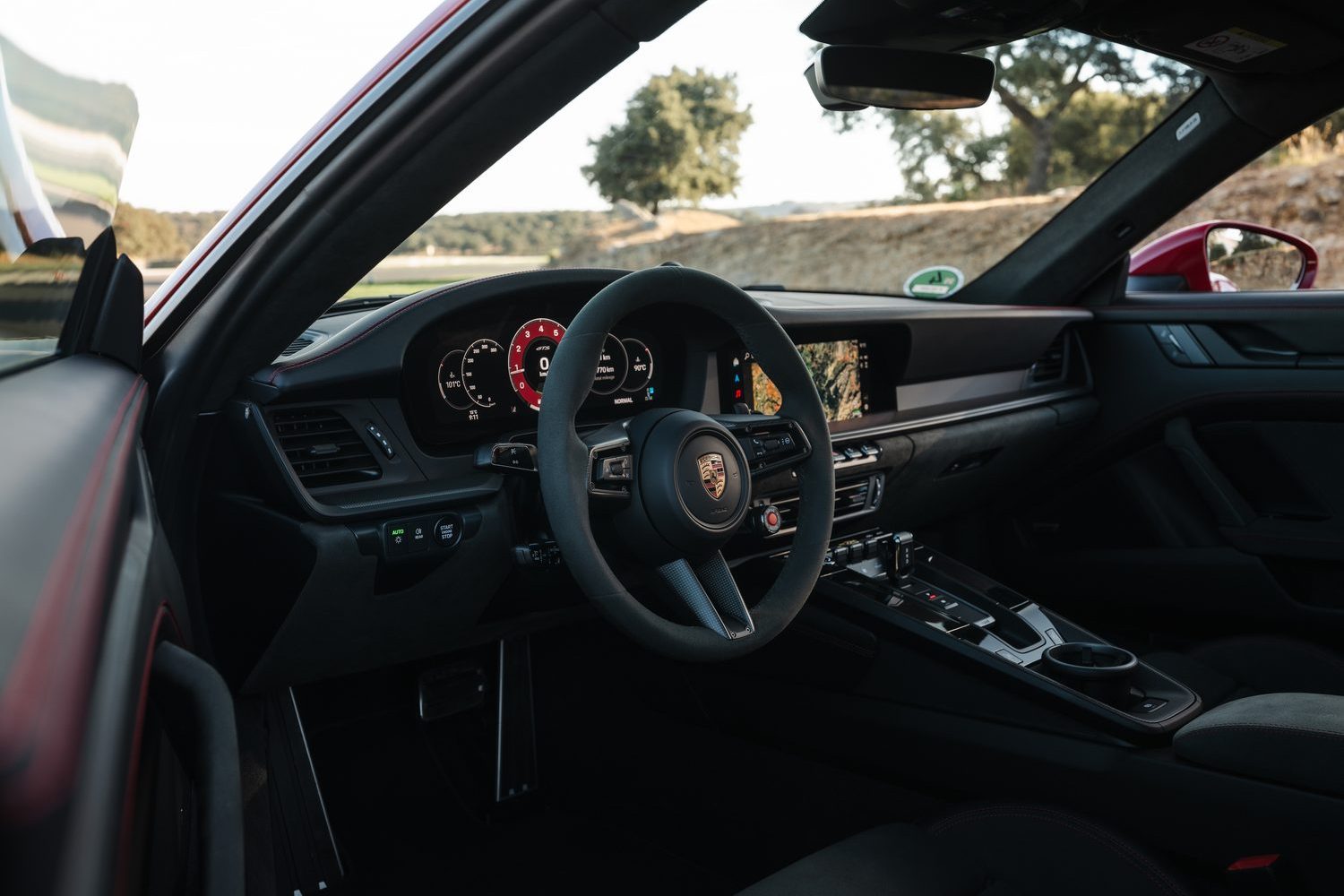
Porsche did not reinvent the GTS’s interior upgrades, however, so like its predecessor the newcomer gets markedly different materials from those in the basic Carrera. Leather still features, but Porsche’s black Race-Tex microfibre material is more prevalent, covering the steering wheel, glove box, dashboard and seats, as well as the doors and arm rest. It even lines the roof.
The idea is supposedly that microfibre materials provide better grip when you’re wearing a fireproof suit and gloves on a racetrack, but in the GTS it’s really just for show. Which is odd, considering the preponderance of black simply means the cabin feels quite dark and claustrophobic. Even the optional red stitching and red seatbelts can only brighten it up so much.
The Porsche 911’s on-board technology
With no big changes to the interior design, technology has played a starring role in the 911’s update. Naturally, there’s the technology in the engine bay, but Porsche has fiddled with the interior tech, too.
Chief among the updates is the arrival of a new digital instrument cluster, which was predictable given the same change was made to the Porsche Cayenne last year. There’s now a configurable display with slightly smaller dials, which solves a minor gripe about the previous 911 - namely the fact the steering wheel meant you couldn’t see the dials very well while driving.
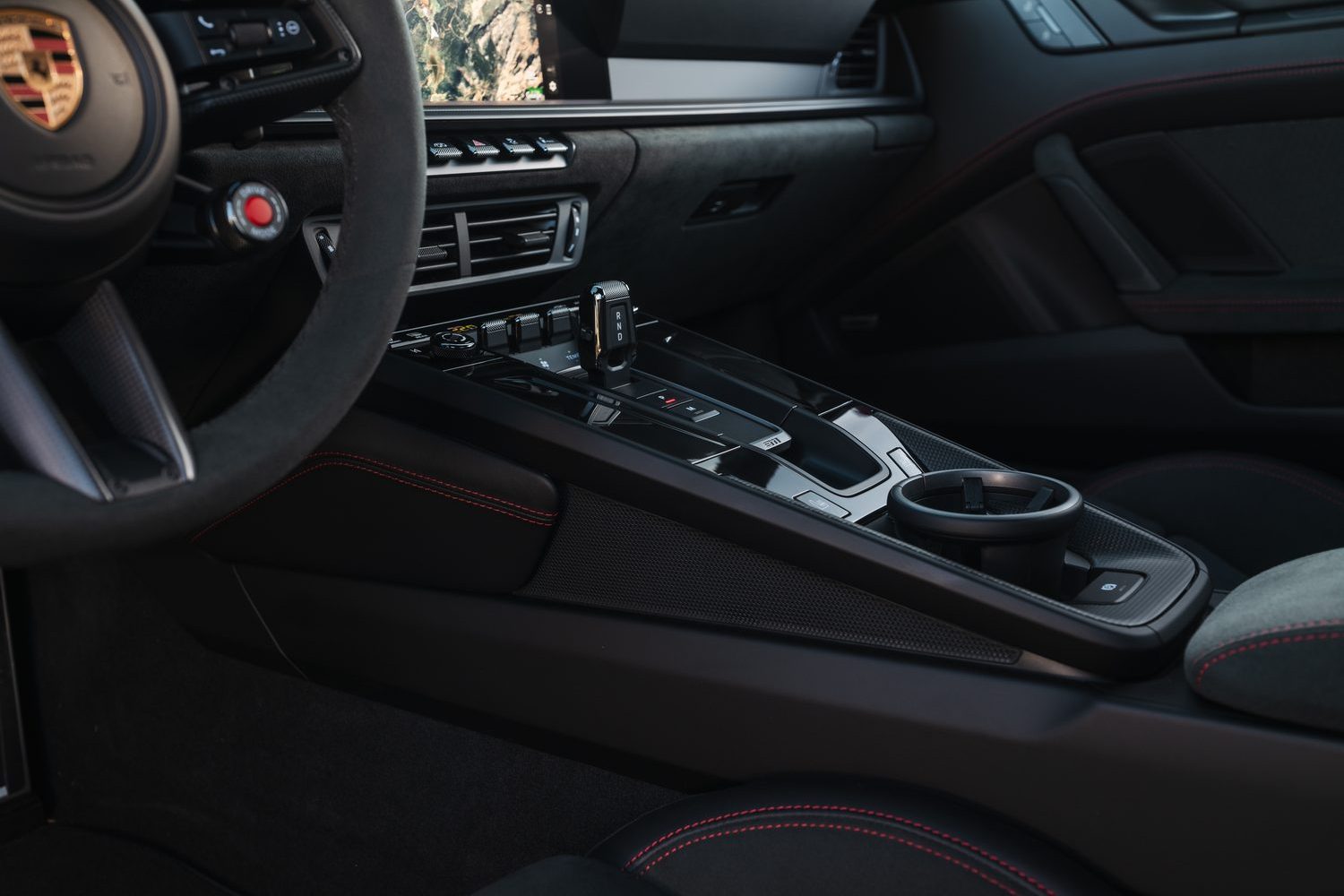
Naturally, being a Porsche, the display works beautifully, and the design is crisp and easy to read. And it’s integrated with the central touchscreen, which has also been updated with greater connectivity to make it a bit more useful for those of a tech-savvy persuasion.
But the technology isn’t just found on the inside of the car. Look closely at the nose of the GTS and you’ll spot a completely different bumper to that of the standard Carrera, with vertical vents dominating. They serve a purpose aside from making the GTS look a bit ugly, because they channel cooling air to the powertrain and brakes, as well as helping with aerodynamics.
When the automatically operated vents are closed, the car cuts through the air much more cleanly than its predecessor, while the vents open when needed to cool the brakes. Put the car in wet mode - the setting designed to optimise traction when the surface is slippery - and the rearmost vents, hidden deep inside the bumper, close to reduce the amount of spray that hits the brakes, thereby fractionally improving performance. It’s a tiny detail that clearly only makes a small difference, but that’s the Porsche way.
Of course, some of the tech is more irritating than assisting - particularly the speed limit warning system. In fairness, Porsche’s system is no worse than any other, but the fact is none of them work properly. Fortunately, Porsche has a spare configurable button on the dashboard that can be programmed to switch the system off, which makes life a bit easier. You still have to use it every time you drive, though.
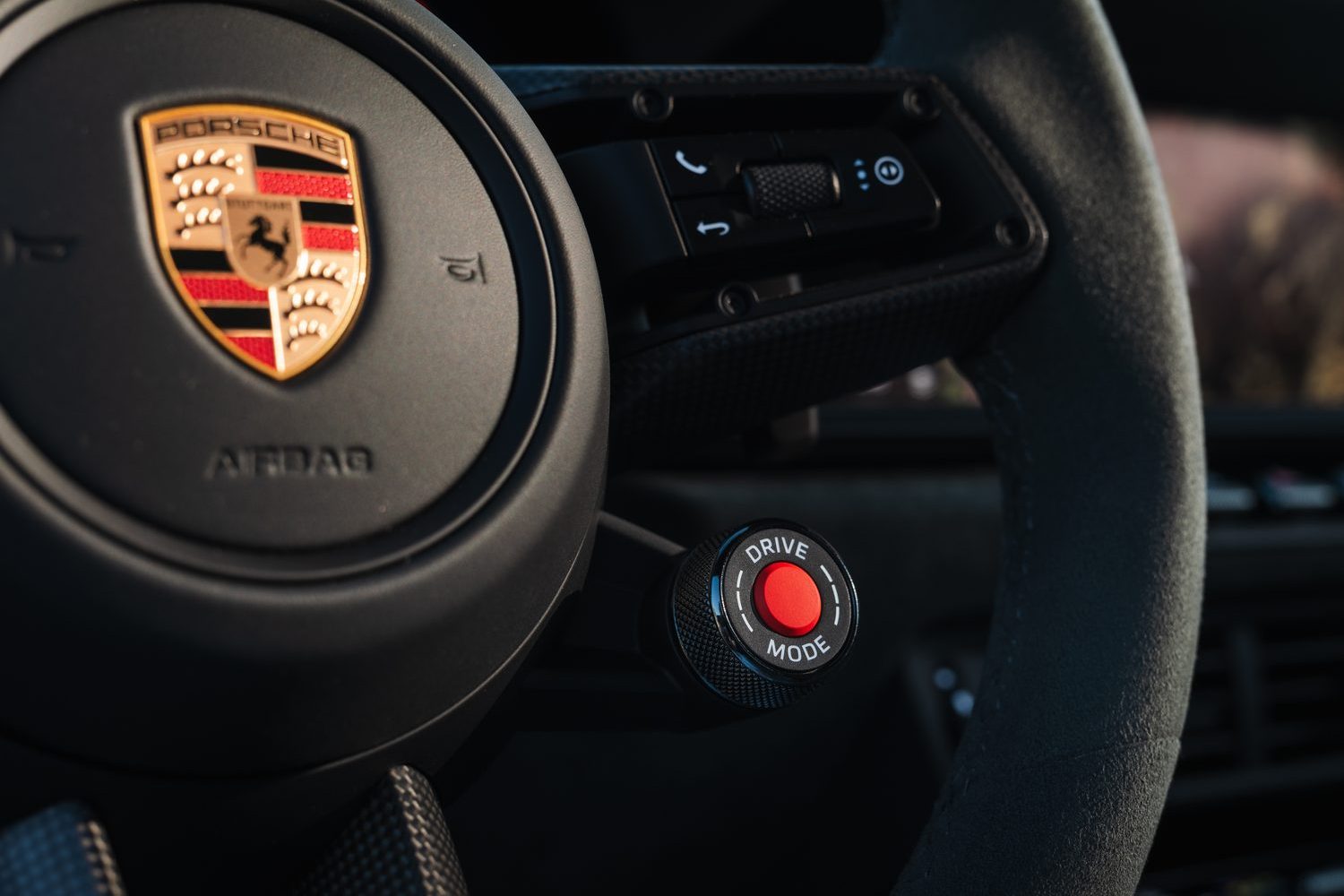
Other systems are more helpful, however, such as the reversing camera, parking sensors and lane departure warning, which is much less annoying than we expected it to be, simply nudging you back into line if the car begins to wander from its lane.
The reasons you’d buy a Porsche 911 Carrera 4 GTS
Despite the furore surrounding the GTS’s move to hybrid power, the new model is an improvement on its predecessor. You barely notice the hybrid system at work, but you will spot the extra performance, especially in the four-wheel-drive car, which offers seemingly endless traction. And the way it handles is little short of sublime. Those who prioritise track use will adore the GTS Coupe, but it’s worth noting that the stiff ride means the softer Targa makes more sense on the road.
Ask us anything about the Porsche 911 Carrera 4 GTS
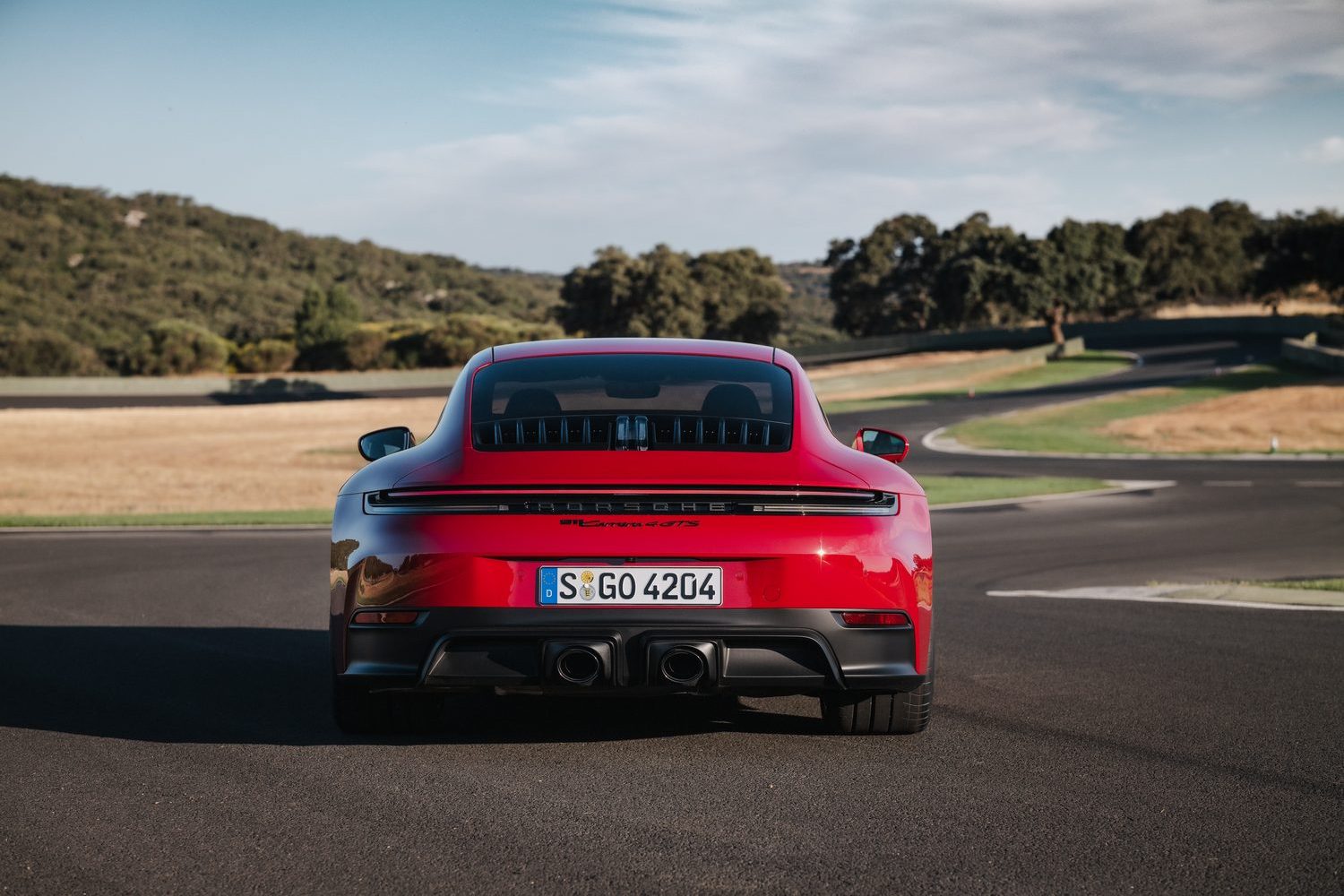
If you want to know more about the Carrera 4 GTS, or indeed any other 911 or any other car, simply use our Ask Us Anything page. The CompleteCar.ie advice service is completely free of charge and allows you to directly ask our experts anything you want to know.

